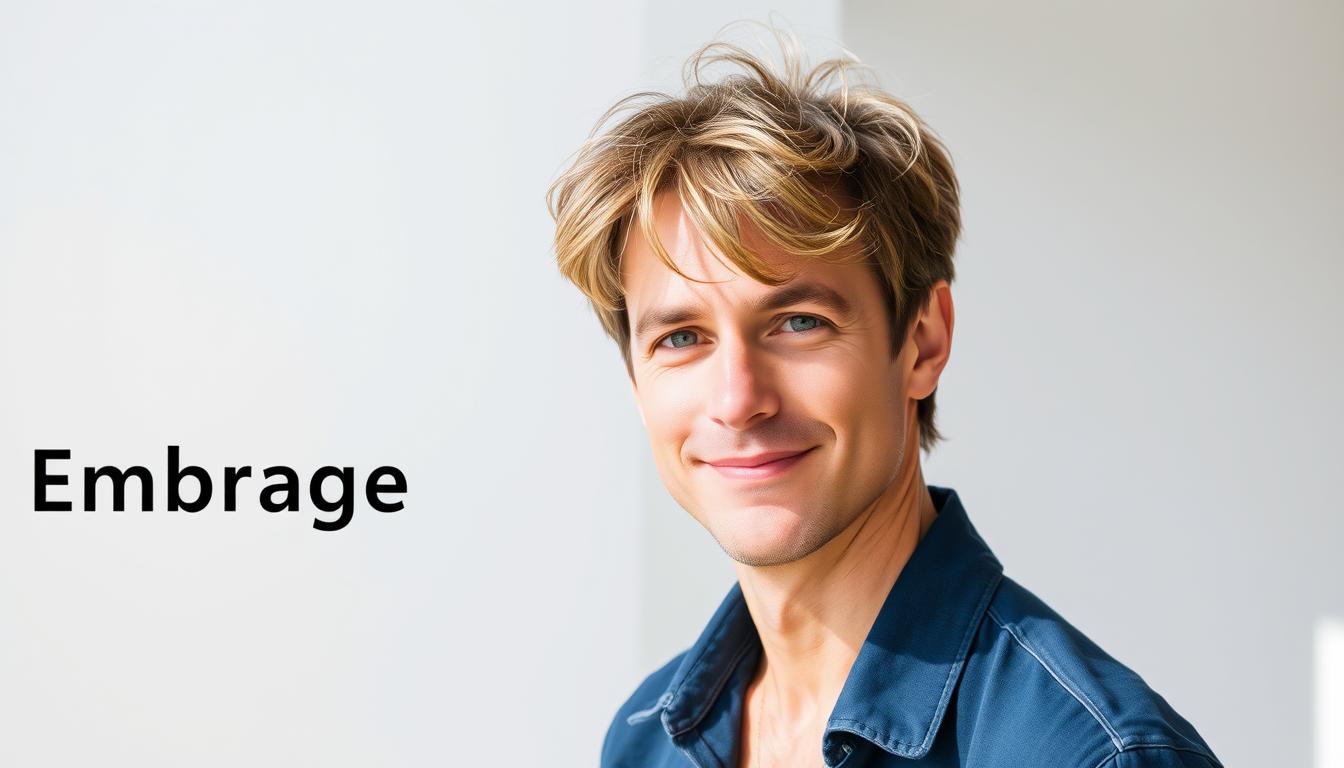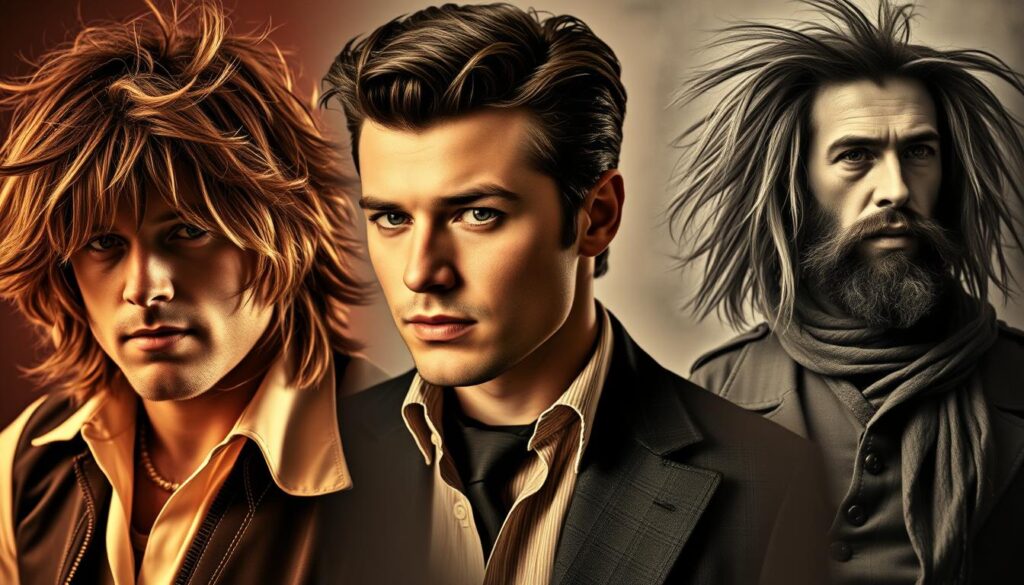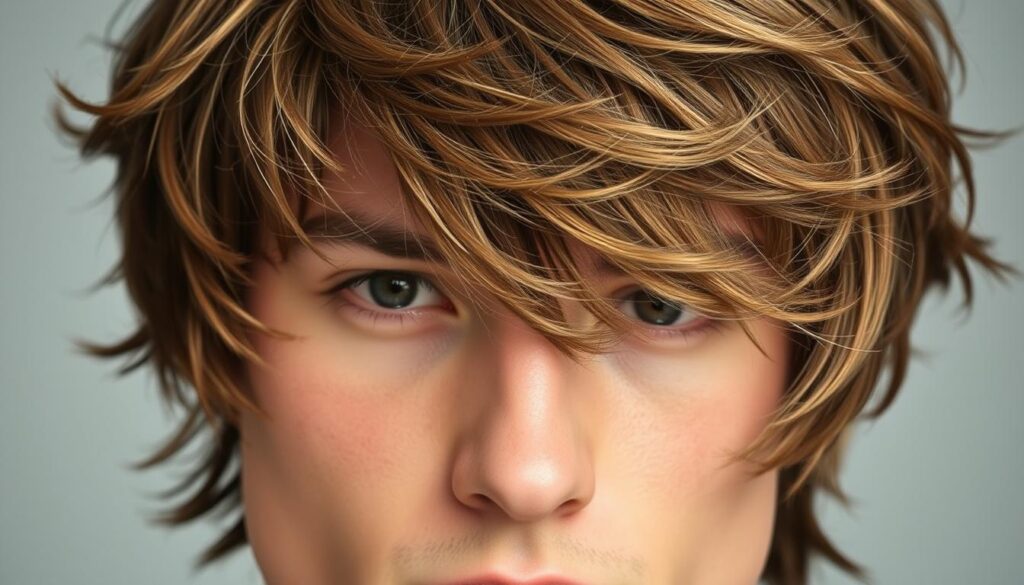
Could a hairstyle from the rock-and-roll era actually solve your modern grooming struggles? The answer lies in a revived classic that’s rewriting the rules of effortlessly cool looks. This isn’t about clinging to nostalgia—it’s about embracing a shape-shifting design that thrives in 2024.
Originally crafted for rebels and artists, this layered cut now delivers adaptability most modern styles lack. Whether your hair falls straight as rain or dances with natural waves, its secret lies in customized dimensions. The magic? A lived-in finish that looks better as the day progresses.
Celebrities and stylists are buzzing about its power to bridge formal and casual settings. Unlike high-maintenance trends, it celebrates your natural texture while adding rockstar-worthy movement. Best part? You’ll spend less time styling and more time turning heads.
Key Takeaways
- Blends vintage edge with contemporary flexibility
- Works for all hair types and face shapes
- Layered structure creates natural volume
- Requires minimal daily maintenance
- Easily transitions between casual and formal
- Enhances natural wave or curl patterns
A Brief History of the Shag Haircut

What began as a defiant statement against conformity now shapes today’s most dynamic looks. In the 1970s, a radical departure from structured grooming emerged, championed by musicians seeking visual rebellion. This effortless vibe wasn’t just about looking different—it screamed freedom from societal expectations.
From ’70s Rock to Modern Revival
Rock legends turned their heads into political canvases. Mick Jagger’s wild layers at Rolling Stones concerts became battle cries for individuality. David Bowie’s flame-colored shaggy hair men styles redefined gender norms, proving self-expression
By the 1980s, punk bands hacked the look with jagged edges, while new wave artists polished it for MTV. Yet as grunge faded in the 90s, ultra-clean cuts took over. “The shag didn’t disappear—it went underground,” notes celebrity stylist Marcus Chang. “True style always circles back.”
Iconic Influences and Cultural Shifts
Today’s revival mixes nostalgia with modern flexibility. Timothée Chalamet’s tousled red-carpet looks and Harry Styles’ gender-fluid interpretations prove this statement adapts to any era. Unlike the 70s’ anti-establishment roots, current versions balance edge with wearability.
Why now? People crave authenticity over perfection. The shag’s revival mirrors our collective push against rigid beauty standards—a haircut that’s lived-in, not lab-made. It’s not just about hair; it’s about owning your unique story.
Understanding the Shag: Definition and Key Elements

The secret to enduring style isn’t in the length, but the architectural layers beneath the surface. This design transforms ordinary strands into dimensional art through calculated unevenness.
At its core, the style celebrates strategic texture creation. Unlike uniform trims, it features feathered ends and deliberate irregularity that catches light dynamically. The result? Hair that appears wind-swept even when freshly styled.
What Makes It Unique?
Three elements define authentic versions: graduated layers, tapered tips, and intentional imperfections. Master stylists use vertical slicing to build movement that flows with your natural growth patterns. “It’s about enhancing what’s already there, not forcing a shape,” explains a New York-based barber.
Choppy edges create visual interest while preventing helmet-head flatness. Whether opting for subtle graduation or bold disarray, the cut adapts to your hair’s density. Thick types gain airflow through weight removal, while fine strands achieve illusionary volume.
“True mastery lies in making calculated chaos look effortless.”
Your face shape determines layer placement. Longer front pieces soften square jaws, while crown layers add height to rounder profiles. This tailored approach ensures every version feels uniquely yours—never cookie-cutter.
Styling Techniques for Effortlessly Cool Looks
Unlock the secret to looking like you’ve never tried—and nailing it every time. The key lies in working with your hair’s natural rhythm, not against it. Start by ditching heavy gels and embracing lightweight formulas that let layers dance freely.
Daytime Casual Styling Tips
After showering, scrunch damp strands with a sea salt spray—it’s magic for creating beachy texture. Let air-dry for 20 minutes, then flip your head upside down. Blast roots with a diffuser on low heat to boost volume at the crown.
For straight hair, rub a pea-sized amount of volumizing mousse between palms. Rake through mid-lengths while twisting sections forward. Thick types? Press a matte pomade into ends to define choppy layers without stiffness.
Evening and Elevated Transformations
Transform daytime texture into polished edge by smoothing a lightweight wax over dry hair. Use fingers to push front layers back, creating subtle height. Curly types can refresh definition with a spritz of curl reactivator.
Pro tip: Blow-dry bangs sideways with a round brush for red-carpet-worthy lift. “The goal is controlled chaos,” says L.A. stylist Mia Torres. “Add shine spray only at the ends to keep roots from looking greasy.”
- Texturizing spray revives second-day hair in 10 seconds
- Dry shampoo at the crown absorbs excess oil between washes
- Diffuse curly hair upside down for bounce that lasts hours
Choosing the Right Shag for Your Hair Type
What if your strands could work with you instead of against you? The key lies in tailoring layered designs to your unique growth patterns. This approach transforms limitations into advantages, whether you’re battling flatness or wrestling with unruly coils.
Styling for Straight and Fine Hair
Flat strands gain instant life with staggered layers. Ask your stylist for choppy ends that catch light and create movement. Blow-dry roots upward using a round brush, then scrunch mid-lengths with volumizing mousse. “Dry shampoo at the crown adds grit that holds shape all day,” advises Chicago barber Luis Rivera.
Fine types benefit from shorter layers at the crown. This lifts hair away from the scalp, creating the illusion of thickness. Avoid weighing down strands—opt for lightweight sprays instead of heavy waxes.
Adaptations for Curly and Thick Hair
Natural coils thrive with strategic weight removal. Longer layers maintain curl definition while reducing triangular bulk. After washing, rake curl cream through damp hair before diffusing. Thick types? Request point-cutting to soften edges without losing volume.
Dense hair needs regular thinning to prevent helmet-head. Matte pomade separates strands for that “lived-in” look. Remember: less product = more natural movement. Your curls should bounce, not fight through product buildup.
“The right adaptation turns hair challenges into signature style.”
Integrating the “shag haircut men” into Your Look
Your layered style becomes a signature when paired with intentional grooming choices. Facial hair acts as the ultimate frame enhancer—stubble adds rugged contrast, while a shaped beard balances longer layers.
Facial Hair Harmony
Match your beard’s density to your hair’s texture. Light stubble complements wispy layers, creating balanced proportions. Full beards pair best with cropped necklines to avoid visual heaviness. For square jawlines, keep sideburns tapered to emphasize your cut’s movement.
Essential Maintenance Arsenal
Three products dominate stylists’ kits: matte clay for piece-y definition, sea salt spray for lived-in texture, and a lightweight conditioner to prevent dryness. Apply texturizing powder at the roots before bed—it absorbs oils while you sleep, giving next-day volume without effort.
Schedule trims every six weeks to preserve the silhouette’s integrity. Use a wide-tooth comb on damp hair to distribute natural oils evenly. “A great style needs partnership between you and your barber,” notes grooming expert Tyler Reed. “Consistency beats perfection every time.”
- Blow-dry with cold air to lock in natural wave patterns
- Refresh curls with water-based sprays instead of heavy creams
- Rotate between clarifying and moisturizing shampoos weekly
Pairing the Shag with Modern Outfits
Your textured layers become a style chameleon when combined with today’s fashion essentials. The right clothing choices amplify that effortlessly cool attitude hiding in every strand.
Streetwear Meets Rock Heritage
Oversized hoodies and distressed denim find their perfect match in this lived-in aesthetic. Graphic tees gain extra attitude when paired with windswept layers—like your favorite band tee just found its visual partner. Leather jackets? They’re not just outerwear but a frame for your hair’s natural movement.
Elevated Everyday Essentials
Blazers get a modern twist when juxtaposed with undone texture. Try rolling shirt sleeves to showcase forearm tattoos while your effortlessly stylish layers soften tailored lines. For vintage flair, wide-collar shirts and corduroy pants create retro synergy without looking costume-y.
Adjust your styling products based on the vibe you’re chasing. Matte paste adds grit to weekend looks, while light-hold sprays keep smart-cual outfits looking intentional. Remember: your hair should feel like the most authentic accessory you own.
